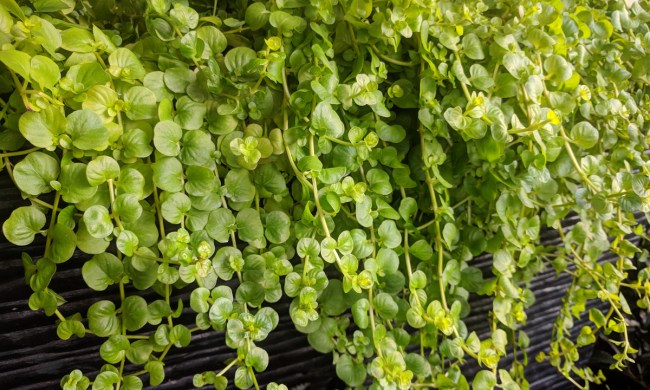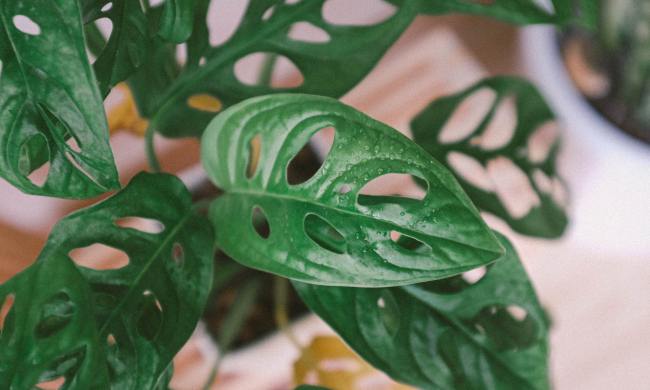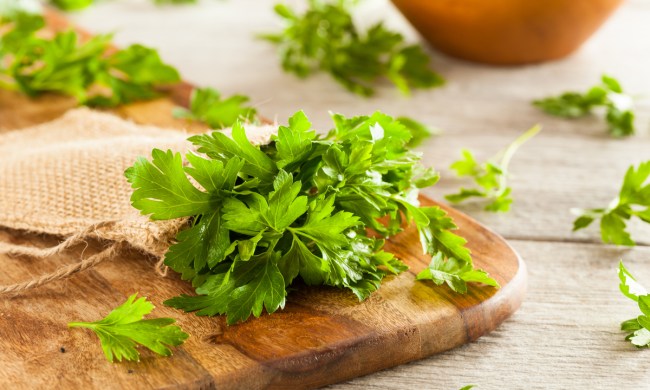Parsley, an annual herb native to Europe, is a household staple across the globe. A mature plant can grow up to 12 inches tall (unharvested) and has delicate, dark green leaves that are often confused with cilantro. There are different varieties of parsley, the main two being curly-leaf parsley and Italian parsley. They aren’t often used for the same purpose — the former is treated more as a garnish while Italian parsley is more commonly used in pastas, pizzas, and the like. Parsley has a lovely aroma, making it an excellent choice in any herb garden.
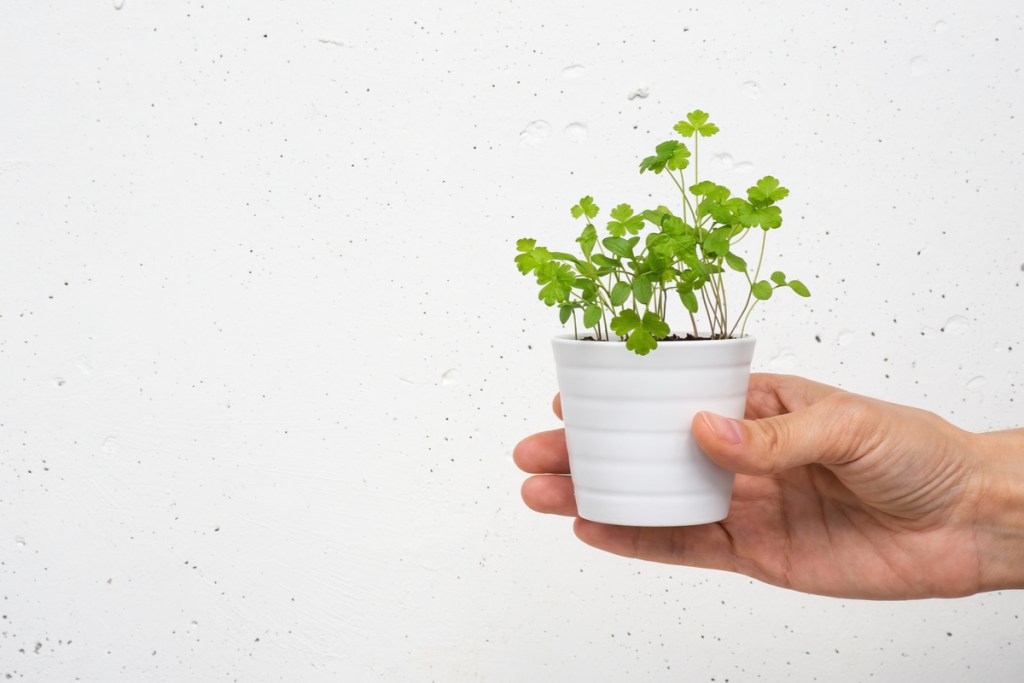
What parsley tastes like and why you should grow it
In addition to its pleasant, grassy smell, parsley has a pepper-like flavor that can easily enhance a dish. The flavor of Italian parsley is much stronger than that of curly-leaf varieties, which is why that’s the kind you’ll see in herb jars, sauces, soups, and more. Italian parsley is used most commonly as a seasoning and enhancer, pairing well with other herbs like basil and oregano.
Curly-leaf parsley, although having a similar smell and taste, is much weaker and thought to be almost bland. Typically in restaurants (and at home), curly parsley is used to garnish and add color to a dish, beautifying the appearance and making the food seem a bit more elegant. It is edible but never intended to be consumed.
Growing your own parsley at home can bring a lot of freshness to your dish. You can harvest it as-needed, and you’ll find that the taste is brighter than that of dried, store-bought versions of the herb.
Growing parsley outdoors versus indoors
Parsley has similar care requirements and needs whether you’re growing it indoors or outdoors. The most important thing to keep in mind is that this herb doesn’t overwinter well in a garden bed. If you choose to grow parsley in a plot with other herbs, vegetables, and crops, you’ll only be able to harvest and enjoy its freshness during the active growing season.
Growing it outdoors in containers, however, is a different story. You still get all the benefits of what nature has to offer plus the ability to bring the containers indoors when temperatures start to cool. You can overwinter your plant indoors and have fresh parsley at your disposal for soups, stews, and sauces. And it’s quite similar to indoor growing.
How does parsley fare in an indoor herb garden?
Parsley is one of the easiest herbs to grow in containers, especially indoors! It doesn’t have a huge root system and doesn’t need a lot of space to grow, which means you can grow it in anything from terracotta pots on a plant stand to mason jars in a windowsill. As long as the container you use has some form of good drainage (a drainage hole or pebbles in the bottom, for example), you won’t have many issues.
The biggest hiccup may be the available lighting. Some spaces are better lit than others, so you may end up needing to purchase a grow light or two depending on what kind of room you have for your herbs. Grow lights are especially beneficial because, in addition to providing supplemental lighting, they also allow you to put your herbs in a more convenient place.
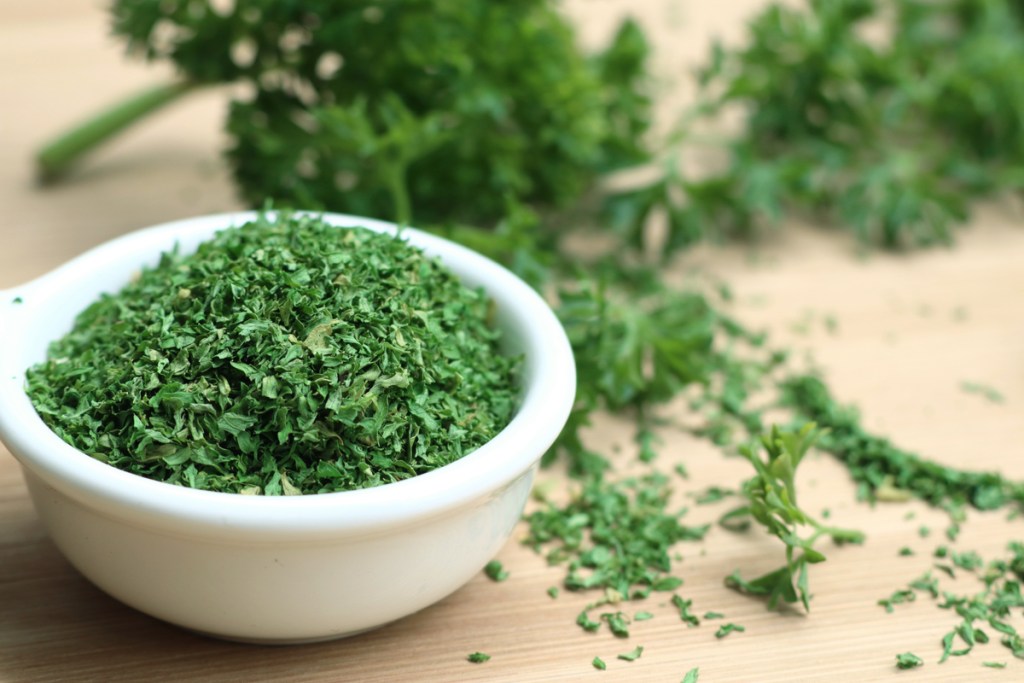
How to care for your parsley
As far as plants go, parsley isn’t very temperamental. It isn’t dramatic, so long as you keep it within (or not far outside) its preferred temperature range. Parsley loves weather between 60 and 70 degrees Fahrenheit, and when outdoors should be planted in an area that gets afternoon shade during those hot summer days.
Parsley will benefit from being fertilized once or twice at the beginning of the growing season when planted in a garden bed. If you’re growing container parsley, you may need to fertilize more regularly, as the nutrients in potting mix can get used up faster. As with anything else, fertilizing should be done in moderation. If you aren’t careful, adding too much fertilizer can have adverse effects.
Light needs: Full sun to partial shade (outdoors), bright indirect light (indoors)
Water needs: Should be kept consistently moist, but not soggy; water when top inch of soil is dry
Soil needs: Rich, well-draining soil; never let it dry out completely
Harvesting fresh parsley
Parsley is ready to be harvested when it’s roughly six inches tall. When planting, many gardeners will buy established parsley plants from a local nursery so that they can start reaping the rewards sooner than if they were growing from seed. If you’re growing indoors, you can harvest year-round as-needed; however, if you’re growing in a garden bed, you’ll reach a point in the growing season where you have to harvest what you can and let the rest die off.
If you have more parsley than you know what to do with, you can always give it away or dry it out and store it in a mason jar. This will help preserve the parsley, allowing you to reach for it and use it when you need it without having to waste all your hard work.
To harvest parsley, all you have to do is cut the stems at a growth node with a sterilized pair of scissors or shears. Take care not to remove more than a third of a plant at a time to avoid stressing the plant.
What to do if your parsley has pests or diseases
If you spot any problems with your parsley, the first thing you should do is identify the issue: pest or disease? Parsley is prone to a few fungal diseases, like leaf spot or powdery mildew, and when outside attracts black swallowtail caterpillars. Once you know the problems, the steps will look a bit different.
If your parsley is diseased, remove any damaged, dead, or dying foliage. These are weak parts of the plant that will only continue to take energy away from the healthy foliage and strong growth. If the disease is too widespread, you may have to get rid of the infected plant to keep it from spreading to others.
On the other hand, if the problem is black swallowtail caterpillars, you may want to think twice before removing them. Caterpillars and butterflies play an important part in the ecosystem and in pollination, and although you may lose a bit of parsley, they’ll grow and move on soon enough. If you live in an area with black swallowtail butterflies, you can try creating a separate butterfly garden just for them! Fill it with flowers the butterflies like and food the caterpillars like, and you’ll create a little oasis that they won’t want to stray from (hopefully leaving your personal parsley plants alone).
